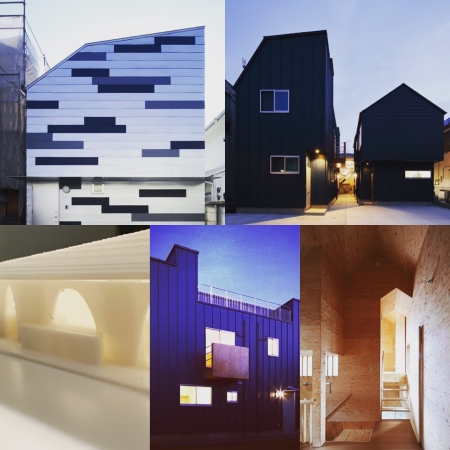アイコンとしての屋根
建ち方に屋根はどのような影響を与えるのかを考えてみた。プランを考える時は鳥瞰的に見るので、屋根も真上から俯瞰し考えるが実際はそのような見え方はしない。
屋根の連なりに地域性が現れることもある。例えば、合掌造りの民家は単体の外観だけでも特徴的だが、たくさんの合掌造りの民家が建った集落は独自の風景を生み出す。また、旧街道の昔は宿場町だったような場所では、長屋のように連続して密着して建ち、低い軒と竪格子の連なりがやはり独特の景観をつくり出す。
これらの例は建ち方に地域性が現れ、その地域性を表現するアイテムとして屋根が用いられている。いわば屋根はアイコンの一部を成している。
"Roof as an icon"
I thought about how the roof would affect how it was built. When thinking about a plan, I look at it from a bird's-eye view, so I think about the roof from directly above, but in reality it doesn't look like that.
Regionality may appear in the series of roofs. For example, a gassho-style private house is unique in its appearance, but a village with many gassho-style private houses creates a unique landscape. Also, in places that used to be post towns on the old highway, they are built in close contact with each other like a Nagaya, and the low eaves and vertical lattices create a unique landscape.
In these examples, regionality appears in the way of construction, and the roof is used as an item to express that regionality. So to speak, the roof forms part of the icon


